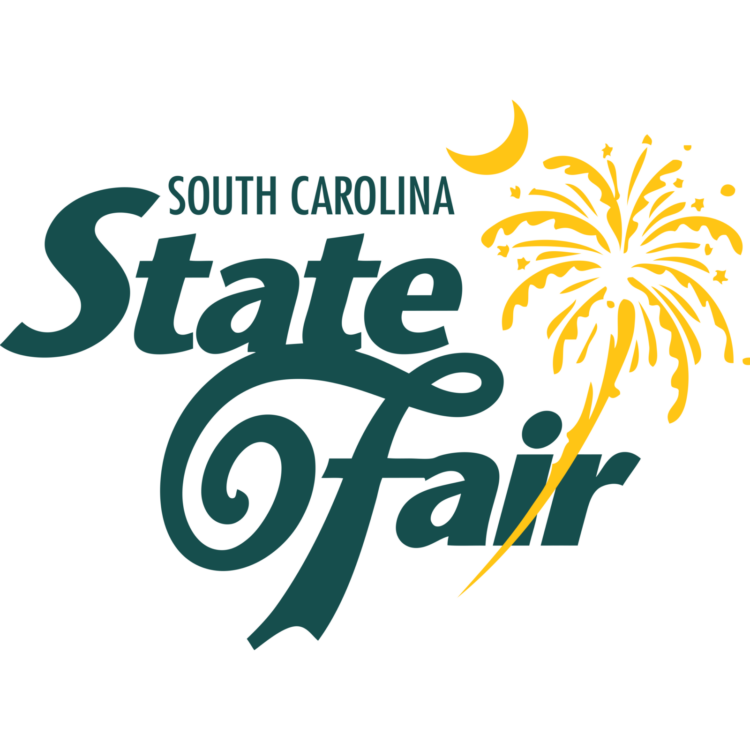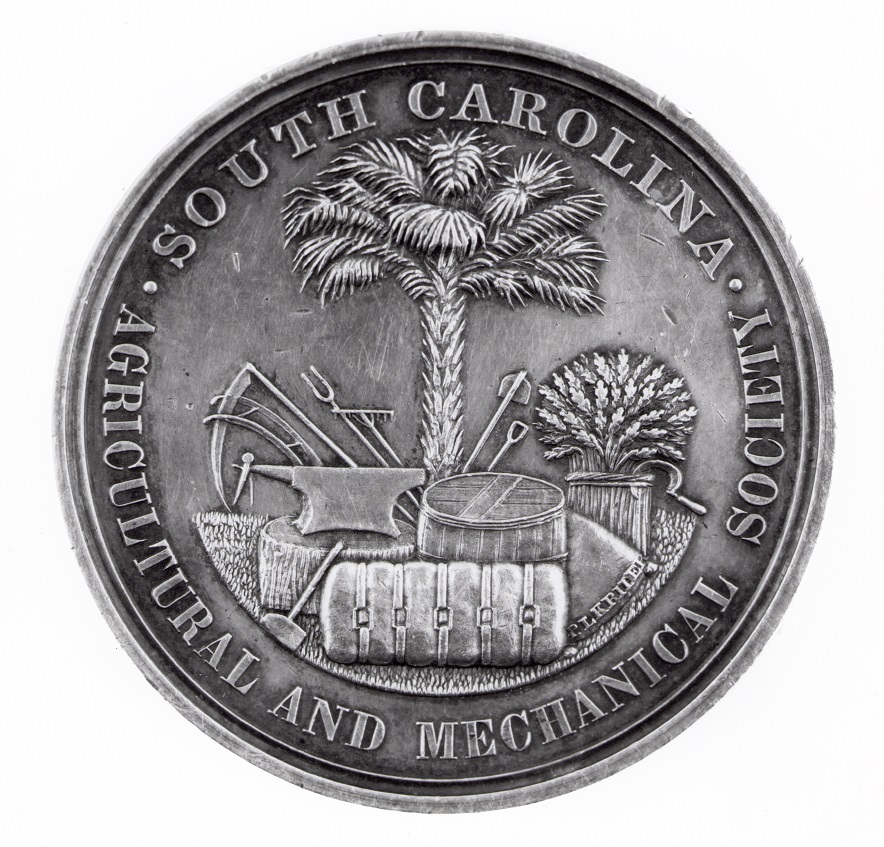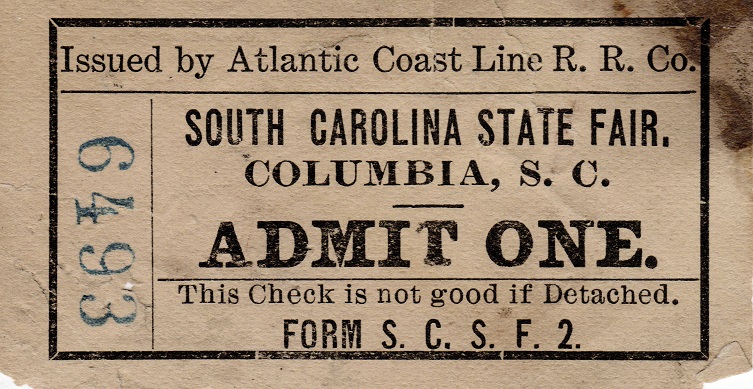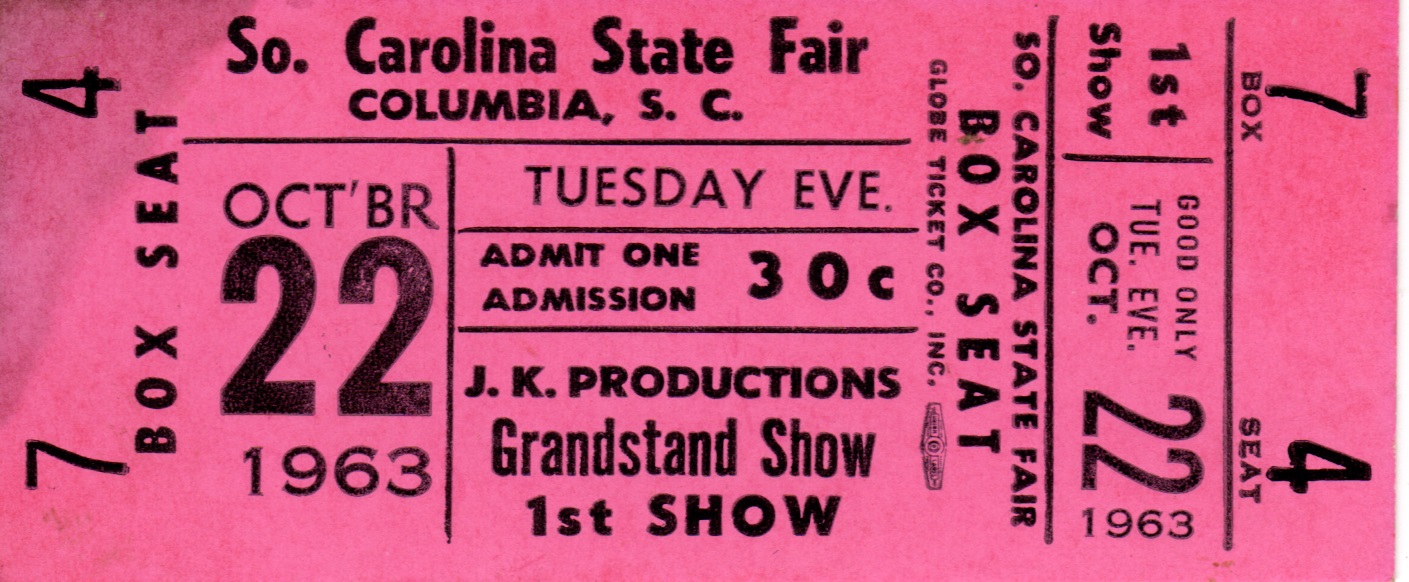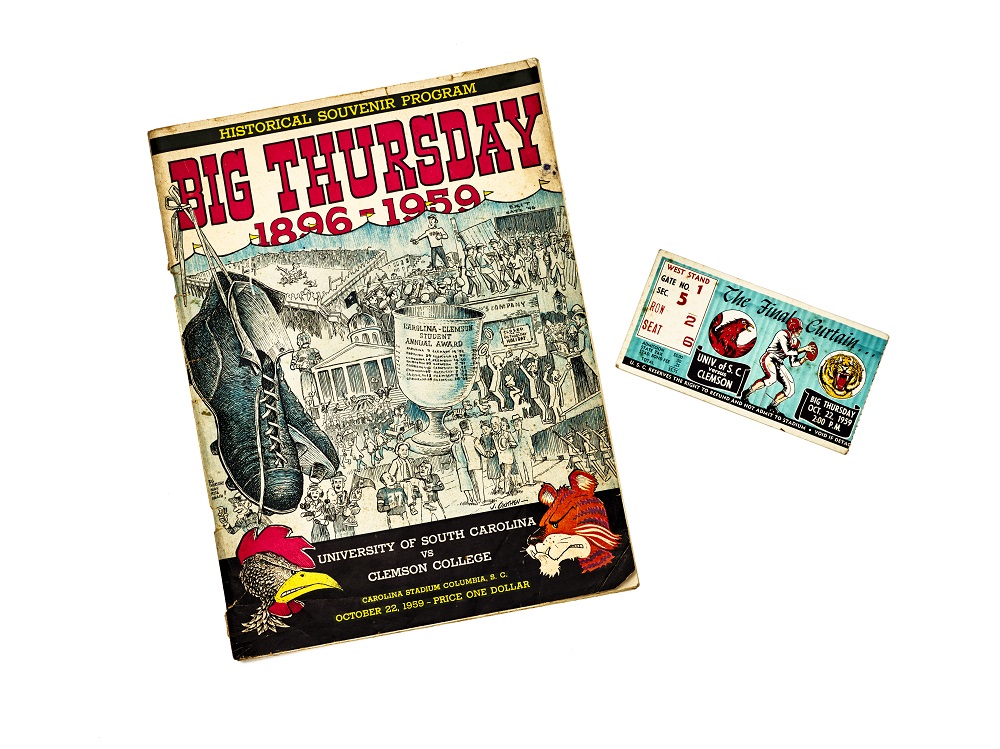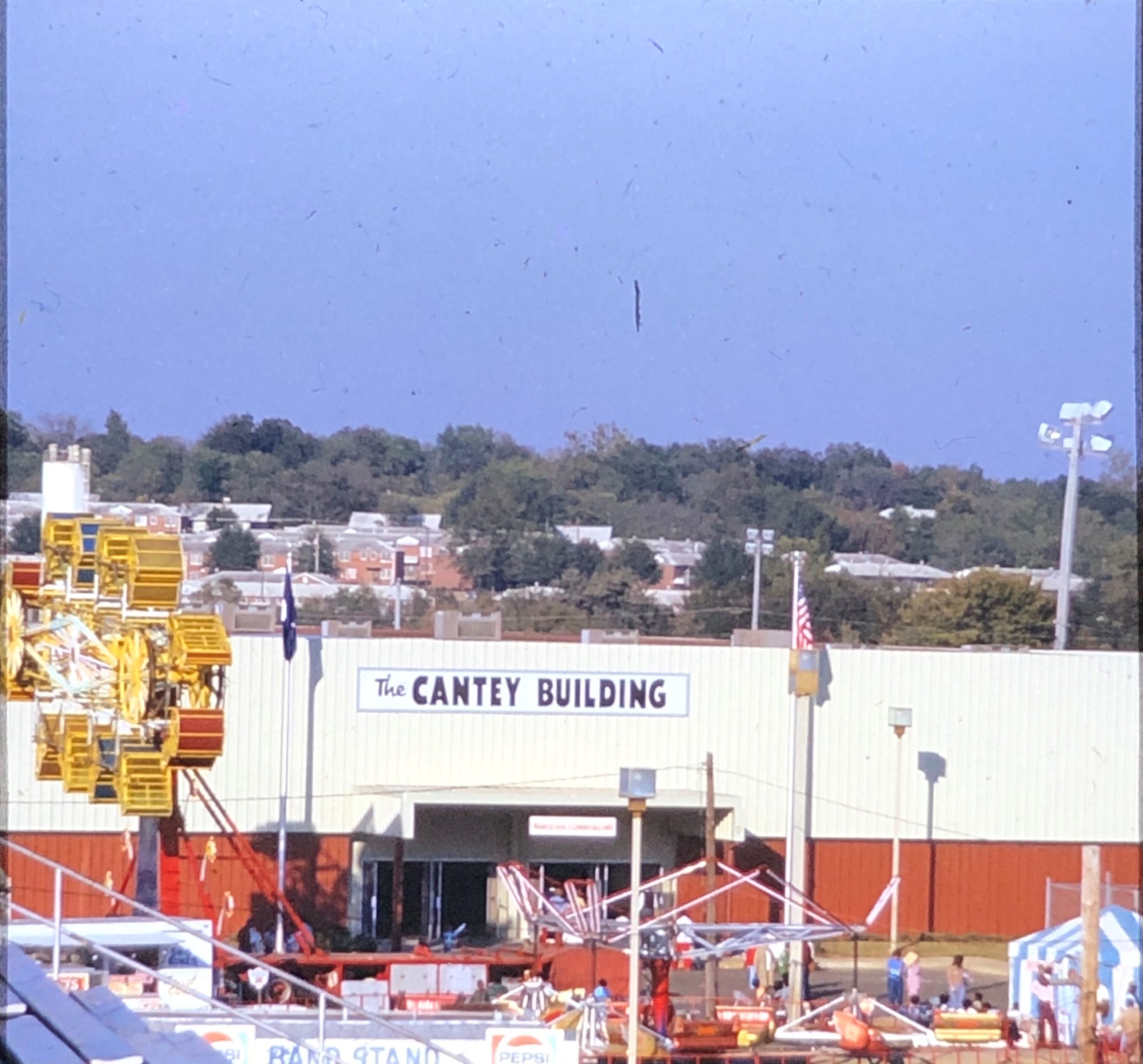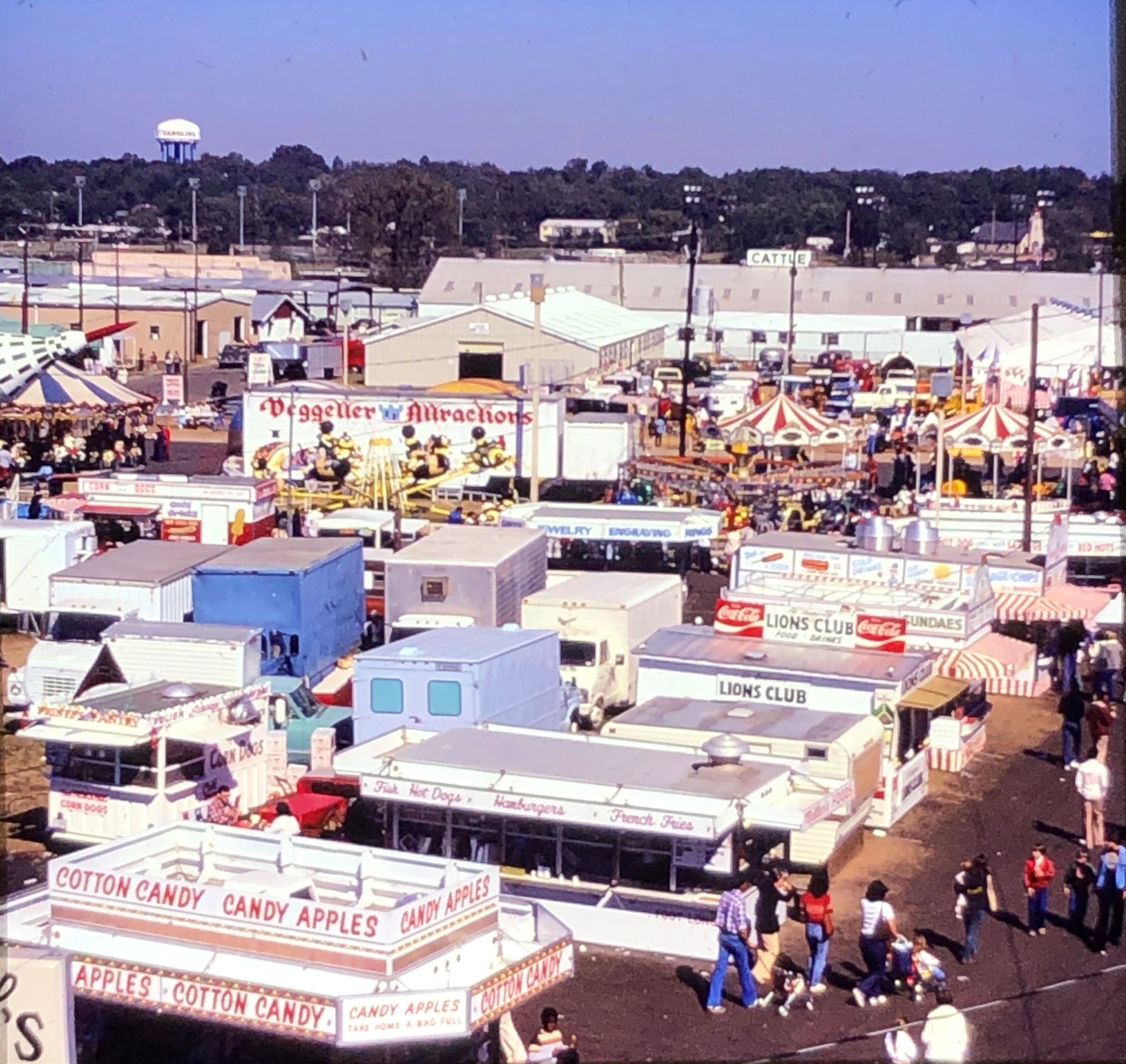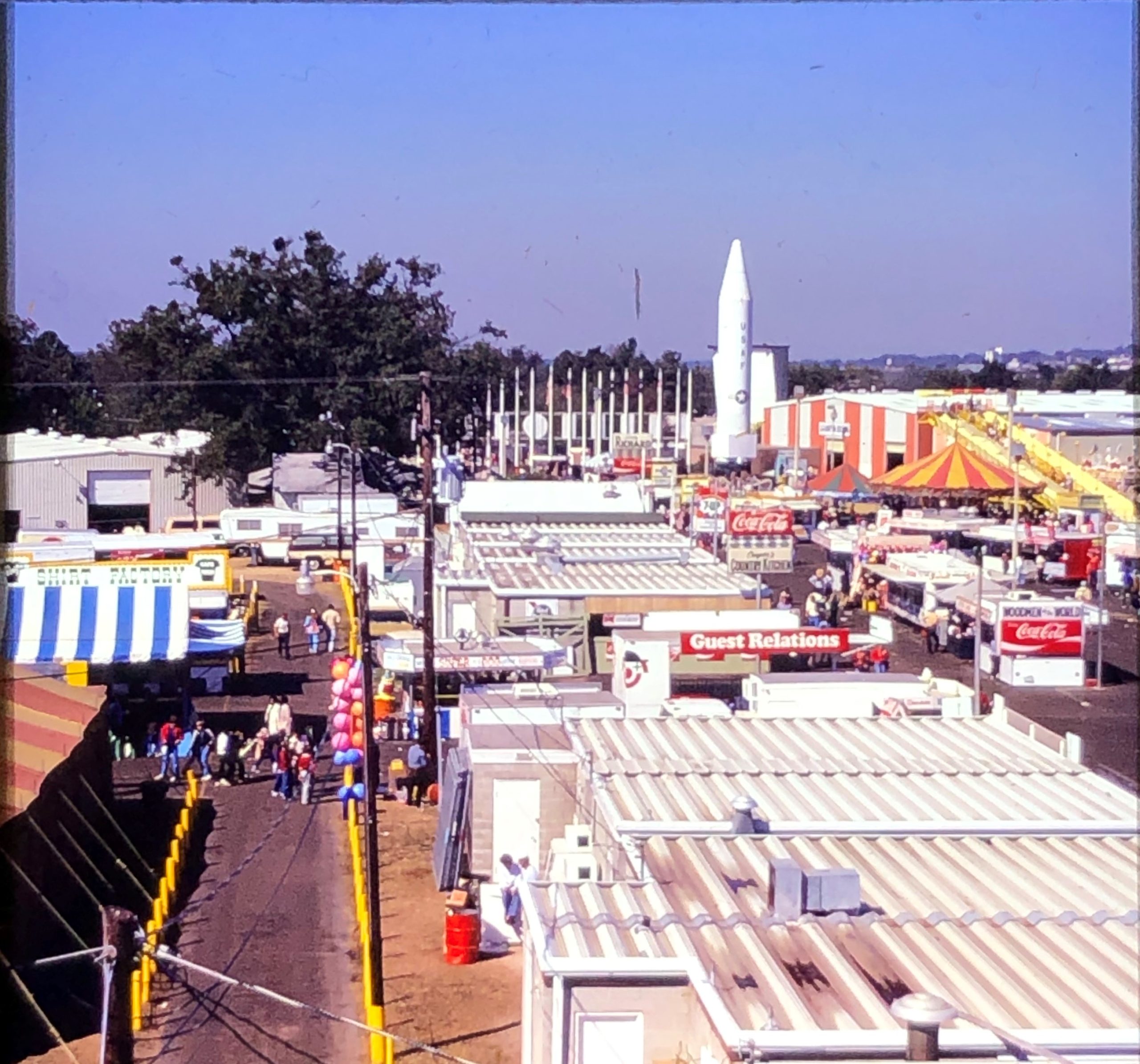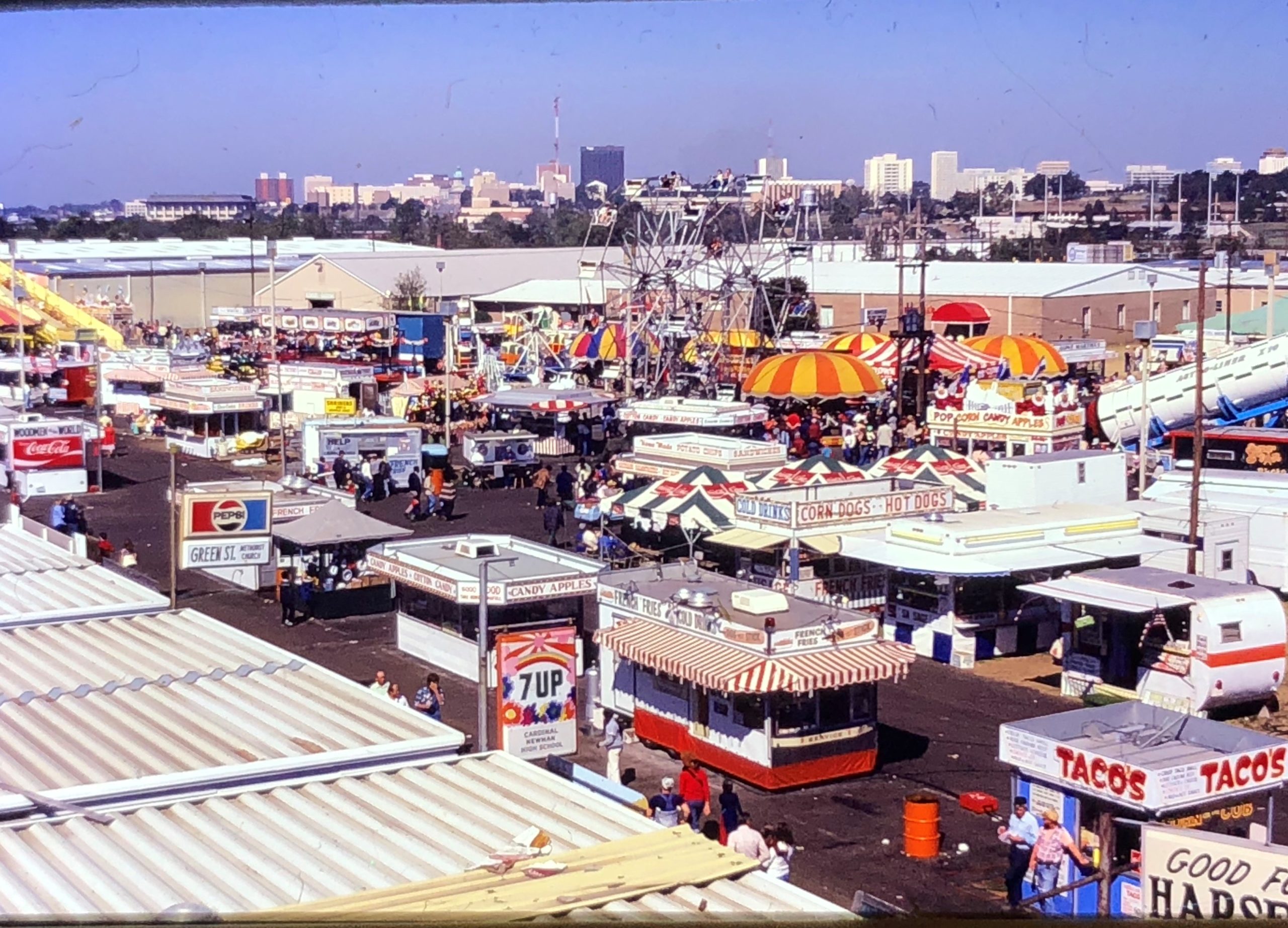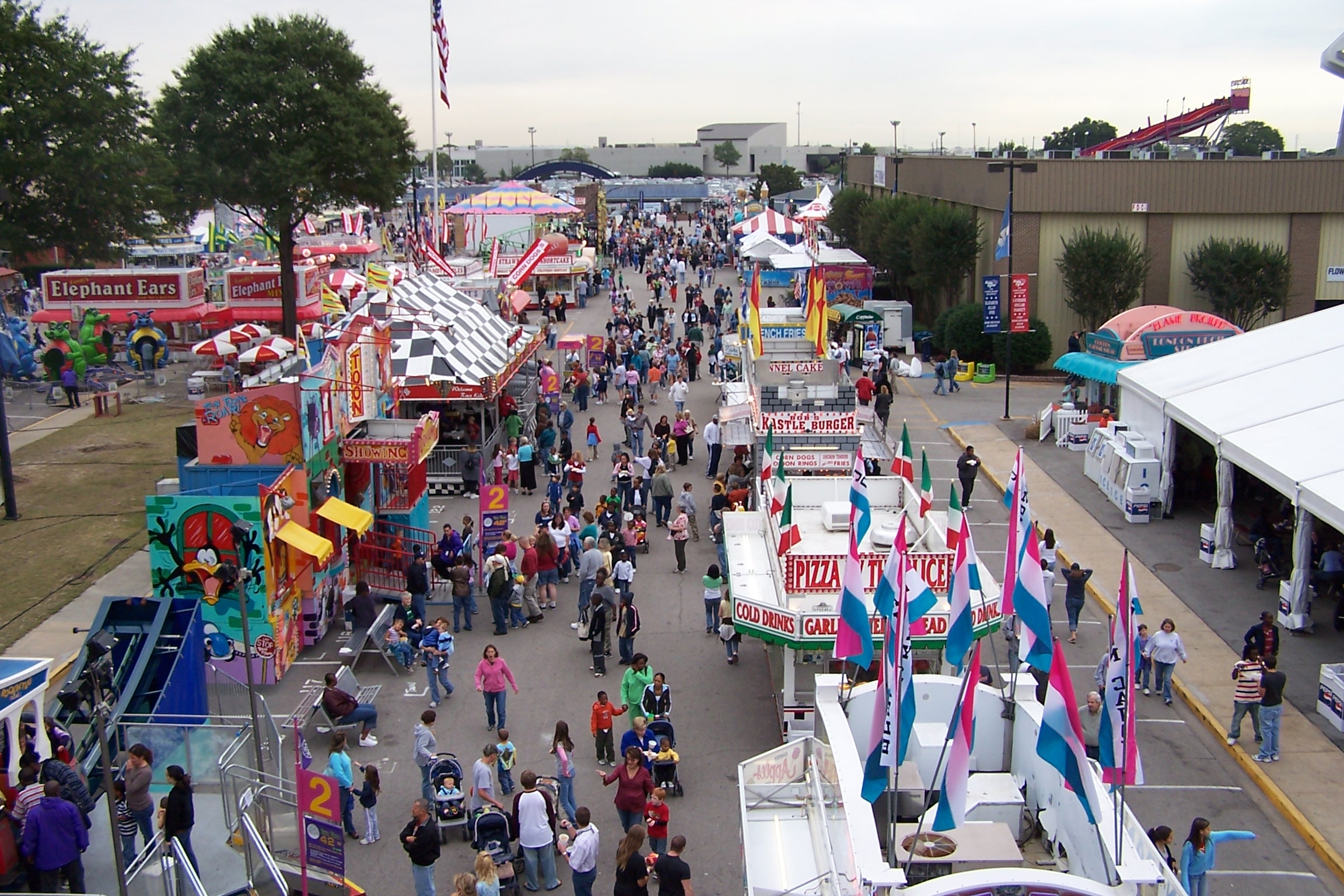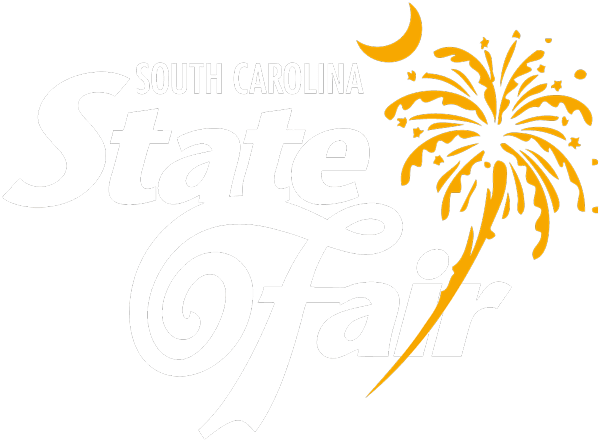History of the South Carolina State Fair
From humble beginnings to a beloved tradition.
In 1869, the State Agricultural and Mechanical Society of South Carolina was created to sponsor a State Fair.
As early as the 1720s, agricultural fairs held in the South Carolina Lowcountry had been the forerunners to the fair that is now enjoyed by hundreds of thousands of guests each fall in Columbia.
During the early 19th century, local and regional agricultural societies sponsored fairs featuring competitive events with prizes for the best crops, livestock, and homemaking skills. In 1839, the State Agricultural Society was organized to establish a statewide fair, and state fairs were held in Columbia from 1841 to 1845 on the State House grounds and again from 1856 to 1861. The revived State Fair, held on the pre-Civil War state fairgrounds on Elmwood Avenue on property provided by the city of Columbia, not only promoted the agricultural interests of the state – a mission that lives on today – but it also recognized the need to encourage industrial development.
There were no fairs during the four years of the Civil War and for several years afterwards. However, every year since 1869 – except for 1918 when the influenza epidemic was raging across the nation – the State Agricultural and Mechanical Society has sponsored a State Fair. By 1903, the fair outgrew the Elmwood Avenue location, and in 1904 the annual fair moved to its present location on Rosewood Avenue (presently, Rosewood Drive) at the intersection of George Rogers Boulevard.
“Our fair’s history is as rich as the state we are proud to represent,” said Nancy Smith, who has served the fair’s general manager since 2018.
Economic Contributions and Cultural Significance
Since its founding in 1869, the State Fair has been an important economic contributor to the local economy. Beginning in the 1870s, the carnival component of the fair was held on Columbia’s downtown streets, flooding the area each evening with thousands of visitors enjoying the restaurants and retail stores, all of which stayed open each night. Each winter from the 1890s until 1969 the fairgrounds provided winter quarters for hundreds of racehorses and their support personnel from northern racetracks.
Even before the annual football contest between The University of South Carolina and Clemson University began in earnest in 1909, “Big Thursday” was the peak day of fair week, culminating with the State Ball on Thursday evening. By the middle of the 20th century, Thursday of fair week was a state holiday centered around the football game. The last Carolina/Clemson “Big Thursday” game was in 1959.
While featuring many aspects of a standard state fair, the South Carolina State Fair has unique characteristics. While it is the official State Fair of the state, it is not connected with the state government but is a private non-profit organization with a self-perpetuating governing board. Most state fairs did not operate every year during World War II, but our State Fair was open every year during the war.
Integration
For more than 70 years beginning in the 1890s, the fairgrounds were used by the Colored State Fair Association to host a state fair for the African American community the week following the State Fair, which had been reserved by custom for white patrons until 1964. The fair was officially integrated in 1965, but the Colored State Fair continued through 1969 as the Palmetto State Fair. By 1970, the separate fairs had become a thing of the past as patrons came together to enjoy a unified fair.
The fair’s evolution into an inclusive event for all South Carolinians marked a pivotal moment in its history, setting the stage for its expanded focus on strengthening communities and families.
Strengthening Communities and Families
Building on its commitment to inclusivity, the South Carolina State Fair has consistently championed initiatives that celebrate family bonds and support the diverse communities it serves.
Since its conception, the South Carolina State Fair has not only promoted agriculture and industry but has also served as a reflection of the culture, values, and history of the state. This dual mission was beautifully captured in an editorial from The State newspaper on Oct. 18, 1960:
“The South Carolina State Fair may mean different things to different people . . . In a very real sense, it is the opportunity to take stock within our state as to where we stand in agriculture and industry, in science and art and history. It is foremost the reflection of our educational values and where we put our faith.”
This vision has guided the South Carolina State Fair’s enduring commitment to strengthening communities and families through meaningful initiatives and programs.
One of the longest-standing traditions was the annual Greatest Grandparents competition, which ran for 30 years from 1987 to 2016. Designed to honor the invaluable role of grandparents in families, the competition invited grandchildren from across the state to submit essays in three age groups: 7-to-10, 11-to-13, and 14-to-18. Each year, six winners were recognized during a special ceremony at the Grandstands, receiving engraved plaques and, for many years, digital televisions. The competition celebrated family bonds and created cherished memories for participants and winners alike.
In 2014, the State Fair joined forces with Palmetto Health (now Prisma Health), Lexington Medical Center, and Providence Hospitals (now MUSC Health) to sponsor the first Pink Fair during the fair’s 145th anniversary celebration. As part of National Breast Cancer Awareness Month, the event offered educational and promotional activities to raise awareness about breast cancer and emphasize the importance of early detection. Survivors were honored through special celebrations, reflecting the fair’s dedication to promoting public health and supporting families in their fight against this disease.
The State Fair has also demonstrated its commitment to South Carolinians during times of crisis. In 2015, following the devastating floods that swept through the state, the fair donated $200,000 to disaster relief efforts. These funds were distributed to organizations such as Harvest Hope Food Bank and The Salvation Army to provide immediate aid to affected communities. Similarly, in October 2024, the fair once again stepped forward after Hurricane Helene, donating $200,000 to support recovery and rebuilding efforts in the hardest-hit areas, with funds going to organizations such as The Salvation Army and Samaritan’s Purse.
Modernization and Expansion
In 2009, the fair launched a multi-year construction plan that included a renovated parking lot, expanded Grandstand entrance, aerial security system, and visual improvements at several entrances. Those upgrades began with the opening of Carolina Park – now Lexington Medical Center Fair Park. The $5 million upgrades to the parking lot included 4,105 spaces on nearly 40 acres as well as improved lighting, more green space, and an underground drainage system. Around that same time, the fair added a new wrought-iron exterior fence along George Rogers Boulevard.
The fair also added the 36,000-square-foot Goodman Building beside the Cantey Building near the south gate. The new exhibition hall was named for Gary Goodman, who served as State Fair general manager for 33 years before his retirement in 2018, and it features shopping and various commercial exhibits.
In 2015, the fair added a new ticket booth at the Rosewood Drive entrance. The former Hampton Building near that same entrance was demolished and replaced with a Hampton Plaza green space area for outdoor dining, tailgating, and other activities.
To accommodate planned surrounding upgrades, the fair donated space along its exterior grounds to allow for the construction of a long-anticipated pedestrian walkway between the fairgrounds and nearby Williams-Brice Stadium in advance of the eventual widening of Bluff Road from Rosewood Drive to Interstate 77. The walkway has offered greater safety to those traveling the fair’s perimeter on foot, including University of South Carolina football fans who tailgate on the fairgrounds and walk to Williams-Brice Stadium.
Resilience Through Challenges
The State Fair celebrated a major milestone in 2019 when it marked its 150th year celebration with a mix of new attractions – including a live Daily Circus – along with many historical offerings and numerous traditional favorites. That year, the fair opened the 1,000-seat Pepsi Place Stage featuring local and regional musical acts near Nutt Cattle Arena to replace the 5,000-seat Grandstand that long had featured national artists before it was replaced by the Daily Circus.
The fair also debuted Carolina Lights – the only downtown Columbia drive-through light show – in December of 2019, not knowing they were starting what would be a COVID-friendly event. Carolina Lights ran each December for five consecutive years.
During the height of the nationwide COVID-19 pandemic in 2020, fair officials were committed to offering patrons a safe way to experience the traditions of the fair. That year the 2020 State Fair featured a free two-day drive-thru event at no charge that attracted tens of thousands of visitors. That offering was complemented by a paid drive-thru food event for four days in the parking lot, allowing guests to purchase many of their favorite traditional fair foods.
The following year, the fair donated the grounds to be used as a free COVID-19 testing site and location for distributing vaccines.
“This was our way of giving back to the community,” said general manager, Nancy Smith.
Commitment to Education
Education also remains an integral part of the State Fair’s mission and is reflected in the $500,000 in college scholarships awarded to students each year through the fair’s Ride of Your Life scholarship program. The South Carolina State Fair launched the Ride of Your Life Scholarship program in 1997. Ten scholarships of $2,500 each were awarded that year, and today the fair awards 50 scholarships of $10,000 each year to South Carolina high school students who plan to study at any public or private college, university, or technical college in the state. Ride of Your Life scholarships are paid in $2,500 annual increments. The fair has awarded almost $6 million in scholarships since the program was launched.
Since 2021, the fair’s ticketing partner, Circle K stores, has contributed additional scholarship funds, making several more scholarships possible each year.
Today and Beyond
Today’s State Fair welcomes almost 400,000 visitors each year, while generating more than $16.6 million in wages annually and accounting for a total economic impact of more than $45.5 million to the local economy.
While most fairgoers attend to experience the most recent Midway ride or sample the latest craze in carnival food, the State Fair continues its sponsorship of premium events in a variety of fields that span from 4-H students showing off their prized farm animals to senior citizens competing in home crafts and gardening categories.
Along with the annual fair, the fairgrounds have served as the venue for some of the state’s most popular events throughout the year, including the annual Craftsman’s Classic, the Home and Garden Show, the Palmetto Sportsmen’s Classic, and many others. Additionally, the fairgrounds have long been the site for tailgate parking for University of South Carolina home football games.
A major State Fair landmark is its iconic “Rocket.” Located at the fair’s north entrance, the Rocket has remained a widely recognized symbol and popular meeting place for fair guests since it was erected on the fairgrounds in 1969.
The South Carolina State Fair has consistently upheld its mission of serving and supporting families and communities, cementing its role as a cornerstone of connection and resilience for South Carolinians.
“We are proud of the fair’s journey, and we are excited about its future as we continue to showcase South Carolina,” Smith said.
A comprehensive history of the South Carolina State Fair can be found in the book, Meet Me at the Rocket – A History of the South Carolina State Fair, available through the Richland County Library catalogue, Amazon, and Barnes & Noble.
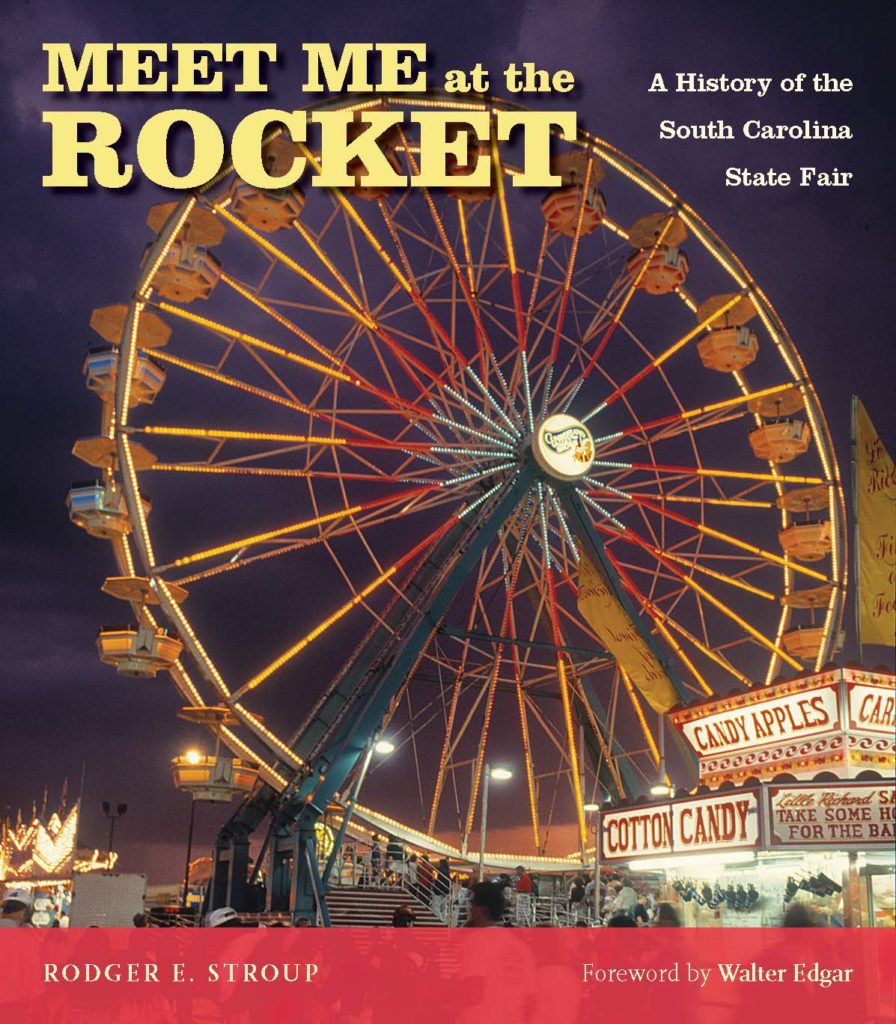
Meet Me at the Rocket, A history of the South Carolina State Fair by Roger E. Stroup is available for purchase at the South Carolina State Fair office during the fair. Otherwise, check with Richland County Library, Amazon or Barnes and Noble.
